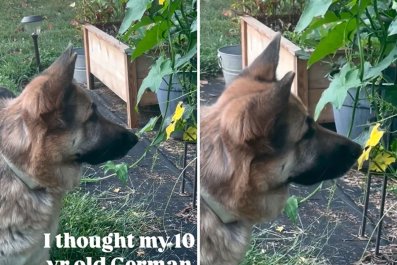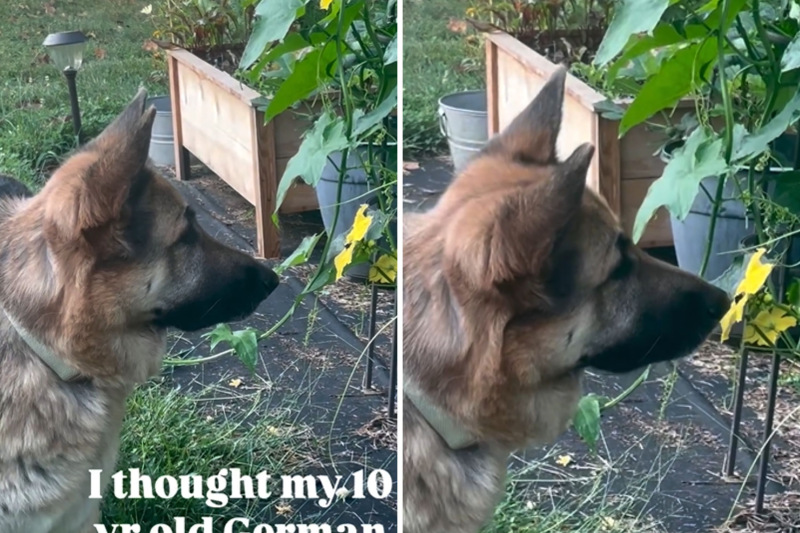
German Shepherd and Bee's Staring Contest Comes to a Snappy End
An owner who thought she was filming her dog sweetly looking at a bumblebee quickly realized her pet's inner thoughts took over.
An August 30 Instagram clip shared to the account @lisa_the_stylist shows a German shepherd intensely looking at a bee sitting on a flower. She slowly moves her snoot closer to get a better look, or that's what the owner thought.
Then, out of nowhere, the dog tried snatching the bee in her mouth. The owner realized her dog attempted "premeditated murder," as the text on the video reads. Hoping to see her victim, the dog searched the ground, but the look on her face makes one believe the tiny bee flew away just in time.
The owner sounded surprised, exclaiming, "Oh, sh**" in the clip. Newsweek has reached out to @lisa_the_stylist via Instagram for additional information.
View this post on InstagramA post shared by Lisa Esparza (@lisa_the_stylist)
The Instagram clip amassed over 280,000 views, 4,860 likes and 124 comments as of Monday.
"He was so gentle to not get the flower," pointed out a viewer, while a second person said: "She let her intrusive thoughts win."
Based on the comments, this is the not only dog who tried his luck with getting a bee. Someone wrote: "Spicy sky raisins, my German shepherd loves them too."
Another added: "My shepherd does this all day every day when he hears them fly by."
Bee-Chasing Dogs
A bee's constant buzzing can quickly get on people's nerves and dogs are no different. Bees and other flying insects can wreak havoc on dogs. With their hearing about four times more sensitive than a human's, bees and other flying insects can wreak havoc on dogs. Some might start obsessing over capturing them and eliminating the sound while others might become fearful.
For those with bee-chasing-obsessed dogs, it's important to try and stop the behavior as it could cause injury, allergic reactions or stings. An article posted on the Whole Dog Journal website recommended using non-toxic bee and insect repellent to reduce the amount of bugs flying around that could trigger your dog. If possible, add plants that don't attract bees or if you do, plant them further away from the home.
Owners can also try distracting their dogs when a bee buzzes through incompatible behavior. For example, have the dog chase a ball or do a trick and reward the behaviors. Select one specific behavior and teach the dog to automatically perform that behavior when the bee appears.
This will take time as bees aren't on house-call. Start by training that behavior in the absence of bees then gradually move to spaces where they might fly around occasionally. Reward them for ignoring the bee and performing their "bee happy" behavior.
However, the article notes this training will likely be easier for happy chasers because dogs who are angry or fearful bee-chasers have stronger emotions to overcome.

Do you have funny and adorable videos or pictures of your pet you want to share? Send them to life@newsweek.com with some details about your best friend and they could appear in our Pet of the Week lineup.
